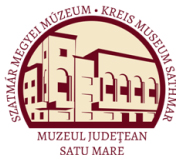Marta, Liviu: The Late Bronze Age Settlements of Petea-Csengersima (Satu Mare, 2009)
VI. Annexes
pot f 2B 1 9/12 s IB,ID 1 9/14 p. cooking v.c EA 1 9/16 pot s IB 1 9/17 f IC 1 9/2 cup f IF 4 1 9/4 cup s 2 1 9/6 pot c AG 1 9/8 cup f 1 Ab 1 9/9 c BF 1 f IB,IF 1 JA 1 amphora s 1 amphora s GB 2 1 cup f IA 4 1 pot c 1 p. cooking v.c AA 1 S8 Complex 2 (Fig. 3, 4). — A pit found in the southern confines of the sector was only partially excavated. It was seen at the base of the cultural layer 60 cm below the surface. The sides were asymmetrical varying from steeply inclined to sloping, and the base was convex. The maximum depth of the complex was 38 cm. The fill was grey. It was covered by complex la and it was cut by complex 1 and complex 3. Inventory: 103 pottery fragments that originated from 22 vessels and 8 pieces of daub. Except for 15 fragments of a pot (PI. 10/10), all the pottery fragments were re-fired. Two of the 4 fragments with incised and excised decorations originated from cups (PL 10/3,11) which were specific to the Suciu culture. A wide, black amphora rim and a bowl with faceted rim (PI. 10/2) belonged to the Lăpuş II—Gáva I horizon. Date/culture: In this pit the pottery was characteristic for both the Suciu de Sus culture and the cultural horizon Lăpuş II—Gáva I. Thus, exact dating was not possible, perhaps it dated to the transition. S8 Complex 3 (Fig. 3, 4) — A pit had quasi-circular oudine (106 x 110 cm in diameter). Its sides were arched. The base was slighdy convex. The maximum depth was 18 cm and the fill was dark grey. Inventory: 5 pottery fragments. One shard which had excised decoration might have been in a secondary context as it was badly eroded. Date/culture: Not assigned to an archaeological culture. Pottery shape Paste Decoration type Pottery typeNo. of elements Plate dish f BH 2Aa 1 10/1 pot c BH IB 1 10/10 dish s KA 2Ac 1 10/2 cup f IC,IB 1 1 10/3 dish c 1 Aa 1 10/4 cup s DA,BE 1 Aa 1 10/5 pot s 2B 1 10/6 s J~c 1 10/7 s BE 1 10/8 s JE 1 10/9 f IA 1 cup s 1 Ab 1 cup f IA.IC 1 1 Sector S9 (36,20 x 3 m, 108,6 m2, Fig. 3, 5). S9 Complex 1 (Fig. 3, 5) — It first occurred at 84 cm in depth, like a large sized archaeological complex (240 x 590 cm) that came out from the trench in the southern and eastern side. It’s likely that it represented the convex shape in the cultural layer, because after it had been dug 6 cm under, 3 different pits occurred: 110
